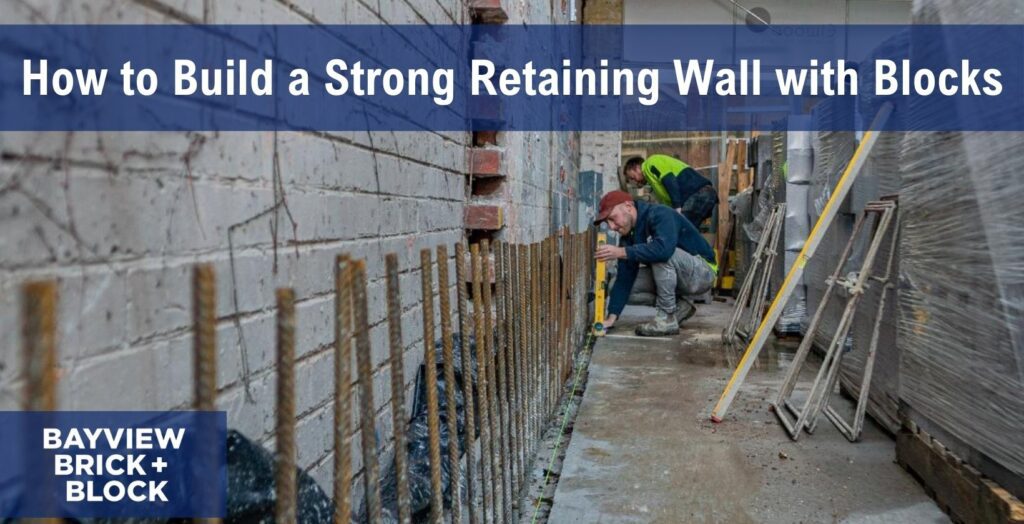You can build a strong retaining wall with blocks by selecting the right materials, preparing a solid base, and ensuring proper drainage. Compacting the foundation prevents shifting, while reinforcing key sections boosts stability. Experienced blocklayers know that poor design leads to movement or collapse, so correct installation matters.
Our blog covers essential structural factors, block selection for durability, and common pitfalls that weaken walls.
Key Structural Considerations for Retaining Walls
Solid construction starts with careful planning and precise execution. Poorly built walls shift, crack, or fail under pressure. The following factors play a crucial role in maintaining strength and longevity.
Proper Footing and Base
A stable base prevents movement and uneven settling. Excavate below ground level and compact a crushed rock foundation before laying the first course. A well-prepared footing supports weight distribution and resists shifting over time.
Effective Drainage Solutions
Water pressure weakens walls and leads to failure. Install a drainage pipe behind the structure and use free-draining material to prevent saturation. A lack of proper drainage results in erosion, cracking, or bulging.
Correct Block Placement and Bonding
Consistent alignment and tight joints improve stability. Stagger joints and use the right adhesive or mortar mix to reinforce strength. Blocklaying and bricklaying techniques, such as interlocking courses, help prevent structural weaknesses.
Reinforcement for Added Strength
Extra support increases load-bearing capacity. Steel bars or geogrid reinforcement help walls withstand lateral pressure from retained soil. Without reinforcement, structures risk cracking or collapsing under heavy loads.
Choosing the Right Type of Blocks for Stability
Selecting the right blocks affects durability and overall performance. Strength, weight, and interlocking capability determine how well a wall handles pressure. Each type suits different site conditions and design requirements.
Concrete blocks provide solid support for retaining structures. Their density resists lateral forces, while their weight keeps them securely in place. Using reinforced cores improves load-bearing capacity, making them ideal for taller walls or high-pressure areas.
Interlocking blocks offer a quicker and more straightforward build. Designed to fit together without mortar, they rely on gravity and friction for stability. Their design prevents shifting, making them effective for landscaping or structural applications.
Lightweight options suit low-retaining walls or garden edging. Although easier to handle, they require careful placement and proper drainage to prevent movement. Without sufficient support, they may shift or crack under prolonged stress.
Common Mistakes That Lead to Retaining Wall Failure
Even a well-built wall can fail if key construction steps are overlooked. Weak foundations, poor drainage, or improper block placement often cause structural issues.
Avoiding these common mistakes helps maintain strength and longevity.
Inadequate Base Preparation
A weak foundation results in movement and instability. Excavating to the correct depth and compacting a solid base prevents shifting. Without proper footing, walls settle unevenly or tilt under pressure.
Poor Drainage Planning
Trapped water increases weight behind the structure and weakens support. Installing an ag pipe and using free-draining backfill prevents excess moisture buildup. Saturated soil creates pressure, leading to bulging or failure.
Incorrect Block Placement
Misaligned courses reduce overall strength. Offsetting joints and using the right bonding method improves load distribution. Gaps or uneven layers allow movement, increasing the risk of collapse.

